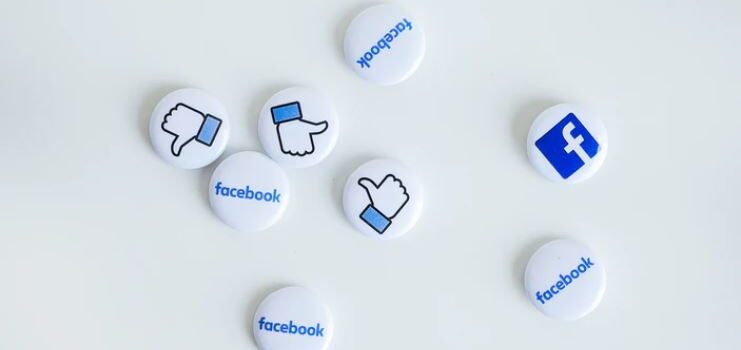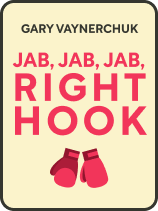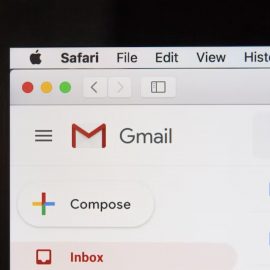

This article is an excerpt from the Shortform book guide to "Jab, Jab, Jab, Right Hook" by Gary Vaynerchuk. Shortform has the world's best summaries and analyses of books you should be reading.
Like this article? Sign up for a free trial here .
Do you want advice on how to promote your business on Facebook? How can you expand your business’ audience?
Most marketers use Facebook, even if they’re not on board with social media in general, because it has such a huge audience. In today’s market, if you want to grow your business, you should know how to promote your business on Facebook.
Keep reading for advice on how to promote your business on Facebook.
How to Promote Your Business on Facebook
Note: The information in this article is from the book Jab, Jab, Jab, Right Hook by Gary Vaynerchuk. The book was published in 2013 and some statistics and information may be out of date but the advice is still valuable.
Facebook is a social media site that allows users to share text, photos, and videos with their network. Most marketers use Facebook, even if they’re not on board with social media in general, because it has such a huge audience. This is why it’s so important to know how to promote your business on Facebook.
The audience: As of December 2012, there were over a billion monthly active Facebook users, and 680 monthly users who accessed Facebook on their mobile devices. Facebook is responsible for 20% of page views in the US.
Who uses it: Facebook is used by almost everyone.
Why they use it: People go on Facebook because they want to find out what people they know are doing and socialize.
Notable Features for Promoting Your Business on Facebook
Facebook has several features that distinguish it from other social media platforms. You should know these if you want to know how to promote your business on Facebook:
Feature #1: Advanced analytics. Studying Facebook’s analytics can tell you a lot about how people work, and you can use this data to make your content more effective.
Feature #2: Huge amount of content. Part of the reason Facebook is such a good marketing tool is that there are so many people on it. However, all of these people create content yours has to compete with.
Feature #3: Free targeting functionality. Facebook offers settings that allow you to make certain posts visible to only a certain demographic, which is ideal for right hook posts. You can see in real-time if people are seeing and engaging with the posts as they like or comment.
- For example, if you’re posting about a sale on handbags, you can make it visible only to a particular demographic you think is likely to buy a handbag, say, 20-to-30-year-old women. If you only post to people who will probably be interested, you’ll get a higher percentage of engagement (shares and so on). The more engagement you get, the more people will see the targeted post.
Feature #4: Use of curating algorithms. Facebook doesn’t want users to see posts they’re not interested in (because if they get bored they’ll leave the site), so Facebook uses algorithms to curate people’s News Feeds.
- For example, even if someone already likes your brand page, they won’t necessarily see your posts. Only 3-5% of your content shows up on your fans’ News Feeds organically (showing up “organically” happens when no one shares the story or you don’t pay to make it more visible.) As a result, if you want to reach a larger audience, you have to either pay or create content that’s engaging enough to be shared.
Creating Engaging Content
The next part of how to promote your business on Facebook is to create engaging content. We’ve established that your content has to be engaging to be visible on Facebook—so how do you create engaging content? The same way you engage with people in real life—you find out what they’re interested in and then talk to them about it.
For example, no matter what you’re selling, one of your jabs could be to ask your customers who their favorite recording artists are. Say 70% of your audience loves Adele. When there’s news about Adele, if you post about it, people will interact with that post. You’ll look like a human being and entertain people, and Facebook’s algorithm will note the interest in a post from your brand. Your next post, which can be more product-related, will show up in more people’s News Feeds.
Paid Advertising on Facebook
In addition to creating engaging content, you can purchase advertising to increase your brand’s visibility. Facebook has two types of ads: the ones that show up on the right side of the screen, and sponsored stories.
Type #1: Right-Side Ads
These ads show up on the right side of the screen when viewing the desktop version of Facebook. They used to be a good investment—you pay only when someone likes the ad and likes cost between $0.10 and a few dollars depending on your campaign.
As of 2013, however, these ads aren’t as useful because they only show up on the desktop version of Facebook, and more and more people are accessing the site on their mobile devices.
Type #2: Sponsored Stories
If you want to know how to promote your business on Facebook, you need to understand how to use sponsored stories. Sponsored stories appear in the News Feed and look similar to user-generated Facebook posts. There are two kinds of sponsored stories:
- Page Posts. Page Posts display your content to more than the 3-5% of News Feeds that would normally show it.
- Stories that highlight engagement. These stories display engagement with your content (likes, check-ins, and so on) to more than the 3-5% of News Feeds that would normally show it.
- For example, if a fan checks in to your cafe, you can pay to have that interaction show up in their friends’ News Feeds.
You can turn a regular post into a sponsored story whenever you like, which allows you to test content before you pay to have its reach extended. If your content is already getting a lot of engagement, you know it’s good and worth pushing further.
Facebook assesses the fee for a sponsored story based on who you’re competing with, how much they’re willing to pay, and how much you’re willing to pay. If your ad is engaging, Facebook will prioritize yours over your competitors’ and charge you less for each interaction. As people engage, Facebook will show the ad to more of them.
If your sponsored story isn’t engaging, Facebook tells you and axes it. Facebook wants your money, but it also wants its users to have good content because if they get bad content, they’ll stop visiting. This functionality can save you a lot of advertising dollars—no TV network would ever tell you your ad is bad and a waste of your money.
Once people engage with your content, Facebook algorithms believe people are interested in your brand, so you’ll get better visibility on your next regular (free) post.

———End of Preview———
Like what you just read? Read the rest of the world's best book summary and analysis of Gary Vaynerchuk's "Jab, Jab, Jab, Right Hook" at Shortform .
Here's what you'll find in our full Jab, Jab, Jab, Right Hook summary :
- Why creating strong social media content is like boxing
- How the rise of social media has brought many changes to marketing
- How to build a connection and then convert a sale






